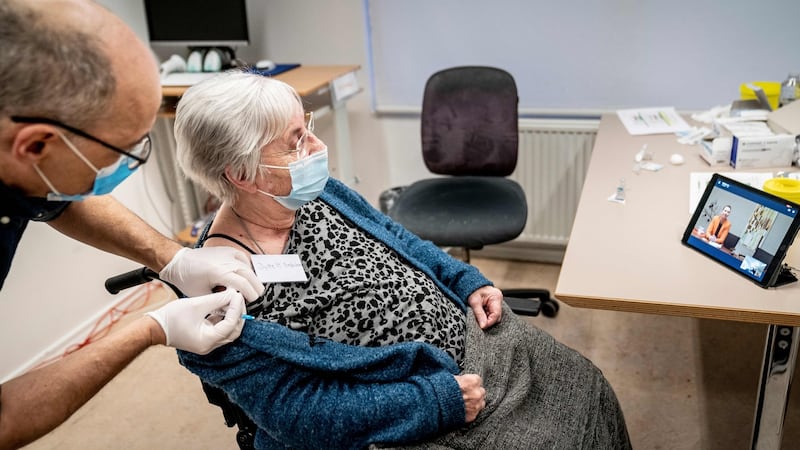Most EU countries have Covid-19 vaccines sitting in freezers. Denmark is administering them so fast it has run out. Since the first Dane, pensioner Leif Heiselberg, rolled up his sleeve for a jab on December 27th, the country has given a dose to more than 2 per cent of its population.
This far outstrips other EU countries: the closest runners-up are Italy on 1.3 per cent and Slovenia on 1.2 per cent (the State is on 0.7 per cent). At one point last week, Denmark's rate of vaccination made it look like it could even catch up with the UK, despite the latter's three-week head start.
Denmark ran through its first batch of vaccines quickly, provoking a public clamour for more. Creative minds even began straying to the doses other EU countries haven’t got around to using yet.
All EU countries had the same level of access to the first vaccine approved by the bloc, the Pfizer-BioNTech vaccine, doses of which were jointly procured and made available simultaneously in proportion to the size of each member state’s population.
So how has Denmark managed to administer doses at triple the rate of the Republic, seven times that of France, and 29 times that of Belgium – the country where the vaccine is made?
Difficult sell
The answer is partly that not everyone wanted this first vaccine. The Pfizer-BioNTech jab was a difficult sell as a first vaccine: it’s based on an innovative technology, relatively expensive at €15.50 a dose, and a logistical feat to roll out. Doses must be transported and stored in special freezers at -70 degrees Celsius.
Some countries turned down part* of their EU quota of Pfizer vaccines, choosing to wait for the cheaper and easier AstraZeneca vaccine, which can be kept at normal fridge temperatures and costs just €2.50 a dose. The price was time: AstraZeneca only applied for authorisation in the EU this Tuesday, and is expected to receive it some time this month, with doses arriving shortly after that.
In contrast Denmark went all-out in preparation for the Pfizer vaccine, procuring special freezer storage systems that it showed off to the press back in December. A capable health system helps: doses are delivered to Denmark’s public vaccine institute, which divides them and forwards them to the country’s five regional health authorities in proportion to their population size. Each Dane has a national identification number in a centralised digital system, allowing authorities to effectively “search” for all citizens above a certain age, and ping them directly to inform them it is time for their vaccine.
The health authorities are also making the most of what they have. Each vial of the Pfizer vaccine technically contains five shots, but can deliver six if a smaller syringe is used – a practice now approved by the European Medicines Agency. The Danes have also stretched the time after which a second dose is administered to a maximum of six weeks.

For the past week, much of Brussels has been embroiled in a bitter and jealous debate about varying national fortunes when it comes to vaccines. Germany stands accused of breaking with the EU's joint procurement process (it took Pfizer doses other EU countries turned down, and bid for extra directly with the company).
World-leading effort
Further afield, Israel leads the world in its vaccine effort. It has already given at least one jab to an astonishing 22 per cent of its population, by creating a frozen distribution system with pharmaceutical company Teva, rolling out mobile vaccine units to villages, and mass vaccination centres in cities. It also paid several times the EU's price for the shots and agreed to share valuable vaccination data with Pfizer, making Israel something of a grand experiment.
At the heart of the varied global performances are policy choices. The US and UK started vaccinating sooner, while the EU argues it got better protection for patients and cheaper prices. It is hard to imagine most EU member states would have done better if they individually negotiated for doses while competing against each other – though doubtless a few of the largest and richest countries would have come out on top.
In any case, the whole debate overlooks two crucial things. The first is that many EU member states are unprepared for vaccine rollout because the vaccines arrived miraculously quickly, less than a year since the start of the pandemic, faster than the greatest optimists had dared hope. The second is that when it comes to vaccines, all Europeans are decidedly flying first class.
The EU has booked 600 million doses of the Pfizer vaccine alone, with hundreds of millions of doses in other vaccines on the way. We will have doses to spare, which we will then be asked to sell or donate to less rich countries, where frontline health workers will be waiting for them.
*This article was amended on January 14th, 2021















